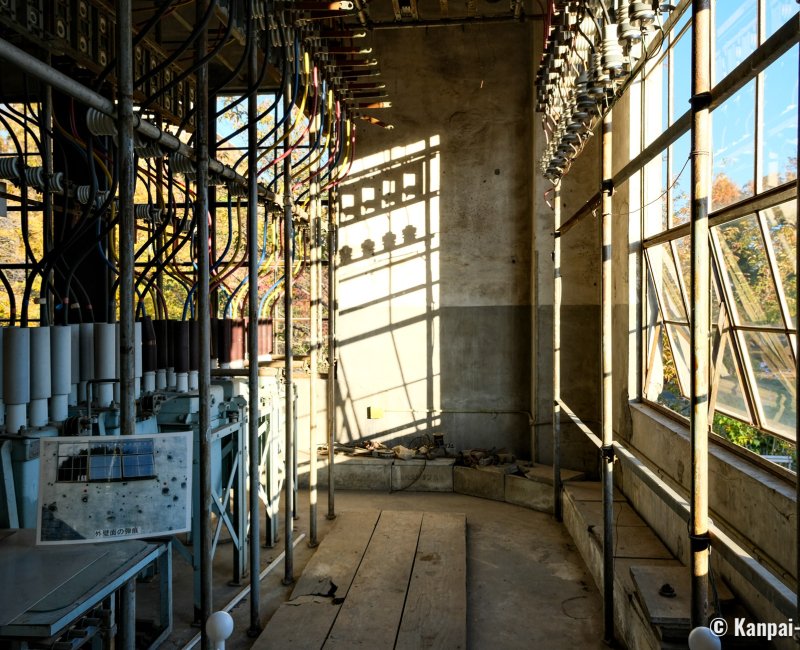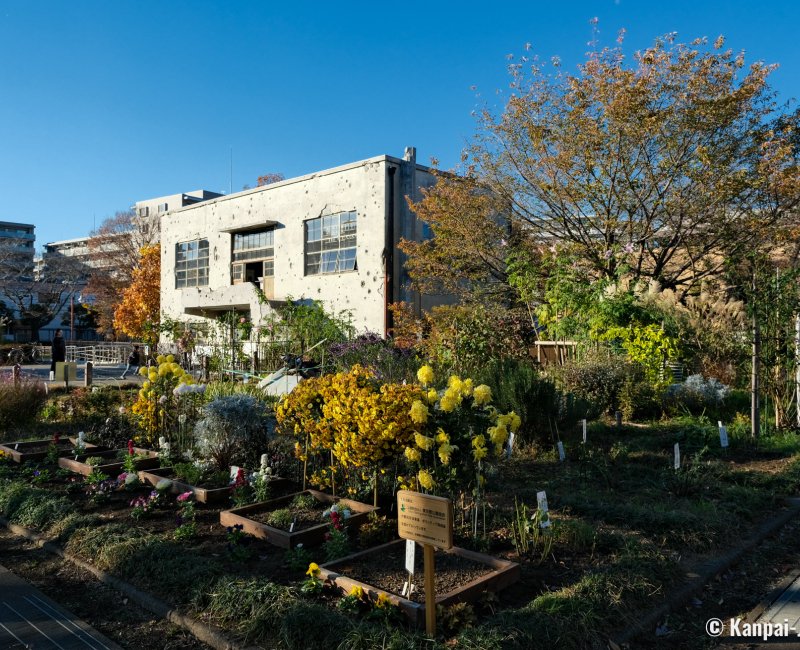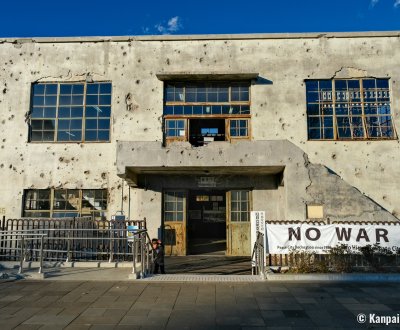Former Hitachi Aircraft Tachikawa Factory Substation
Relic of 1945 Bombings in Western Tokyo
The Former Hitachi Aircraft Tachikawa Factory Substation is a building preserved as a witness of World War II, located in Higashi-Yamato City in the West of Tokyo. Designated a Cultural Property in 1995, it is intended as a place to remember and pass history on to the younger generations.
The Former Hitachi Aircraft Tachikawa Factory Substation is a small concrete building in Minami Koen, a park of Higashi-Yamato City, a peaceful commuter town in the west of Tokyo. As one of the few remains of World War II in Japan, it is sometimes introduced as the eastern counterpart of Hiroshima’s Genbaku Dome.
Tachikawa’s Hitachi Factory
Built in 1938, the substation was part of a huge factory of military aircraft motors, that it supplied with electricity and is now the last vestige. At the peak of its activity in 1944, more than 13,000 persons were working at the factory.
During the Pacific War (1931-1945), western Tokyo was home to several military manufactures and consequently targeted by several bombings. Tachikawa’s Hitachi Aircraft Factory was bombed 3 times in 1945: on February 17, on April 19 and April 24, the latter destroying the production site by 80 %.
However, the substation’s structure of reinforced steel concrete withstood the attacks, although damaged by shrapnel. After the war, the factory is transferred to another company producing tiles and looms, that operated until 2000. The substation was used in its existing condition for electricity production until it was closed down in December 1993.

Conversion into a war memorial
Higashi-Yamato City initially planed the substation's dismantlement in order to reclaim part of the land and create a municipal park. However, citizens and former workers rallied to protect the building, having it designated a City Cultural Property in 1995, October 1rst, as a witness of World War II.
The substation was renovated enough for allowing visitors to safely enter its grounds, but still bears the scars of the bombings, such as walls pierced by bullets, indicating the violence of the attacks. Its new purpose of a monument for peace is displayed on a large banner hanging on a fence marked on which "No War" is written in English.

An educational and artistic project
Multiple details are reminders of the place’s past: big metallic wires are piled on the lawn surrounding the buildings, and pieces of industrial machinery are also scattered in the grass, as if they were not moved since the bombings.
When arriving from the south, the path follows the American bombers’ trajectory which is engraved into the ground and connecting to a thin monument topped by propeller blades of a plane ✈️. A large forecourt ornamented with a mosaic made of mechanical parts opens in front of the small building. Inside, there are 2 distinctive areas:
- The ground floor is an educational exhibition about the factory itself, its production between 1938 and 1945 and the bombings;
- The first floor, only accessible accompanied by a guide, shows the electric installations of the times and the staff’s resting room.
On the substation’s open days, visitors are guided by volunteers and the ground floor is freely accessible. However, explanations are only in Japanese.
The building is a reminder of a violent event that contrasts with the peacefulness of the public park enlivened by children playing and the flower garden surrounding it. The Former Hitachi Aircraft Tachikawa Factory Substation can make a short cultural halt when walking along the Tamagawa Josui waterway, and may interest amateurs of contemporary history with a solid Japanese language background.

